Abstract
Using a piecewise linear approach, individual saccadic eye movements have been Fourier decomposed in an attempt to determine the effect of saccadic amplitude on frequency characteristics. These characteristics were plotted in the traditional Bode plot form, showing gain and phase as a function of frequency for various eye movement amplitudes. Up to about one octave beyond the -3 db gain frequency, the limiting system dynamics represented by the saccadic trajectory of a given amplitude may be considered linear and second order. The -3 db gain frequency was used as a measure of bandwidth, and the -90° phase crossover frequency was used as a measure of undamped natural frequency. These two quantities were used to calculate the damping factor. Both bandwidth and undamped natural frequency decrease with increasing saccadic eye movement amplitude. The damping factor shows no trend with amplitude and indicates approximate critical damping. When compared with the normal variation of characteristics for a given movement, the frequency characteristics of fixed-amplitude saccades showed no generalized trends with changes in direction or DC operating level of movement.
Full text
PDF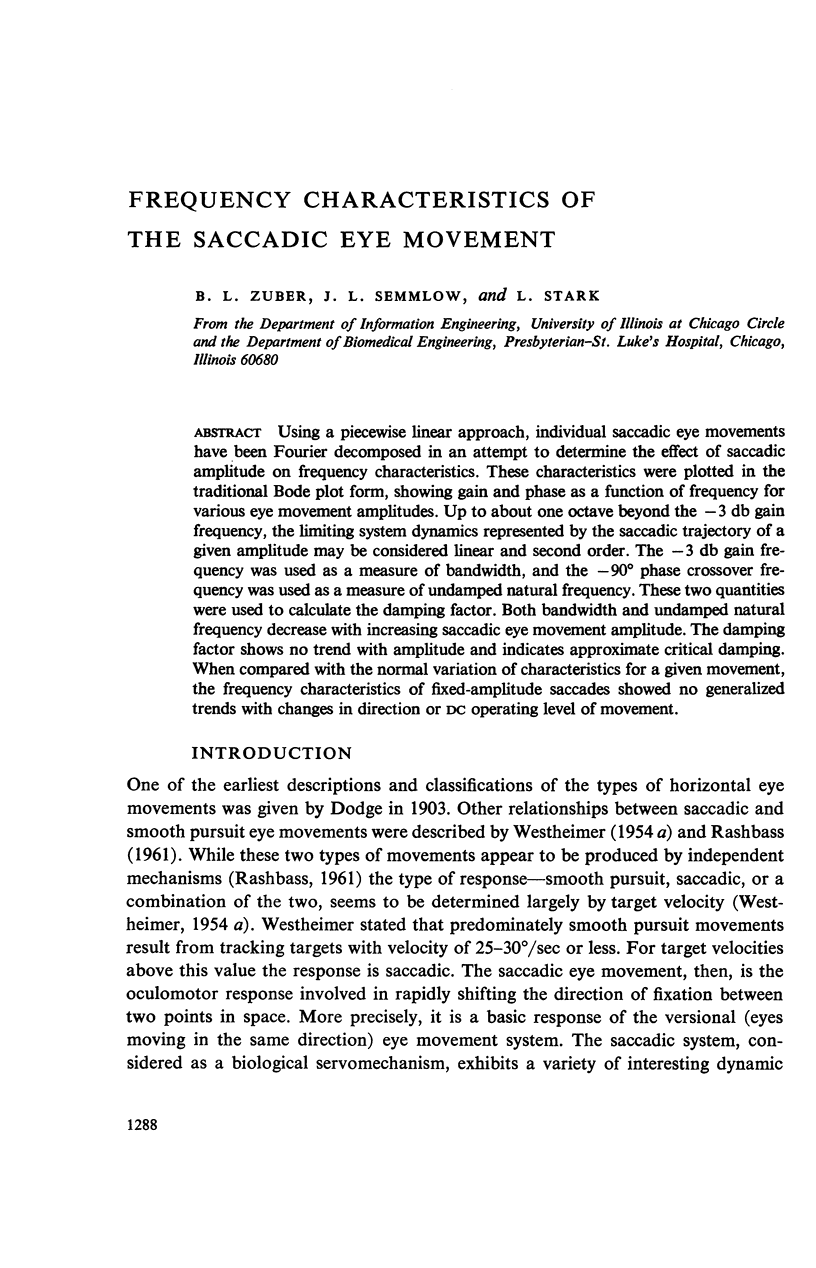
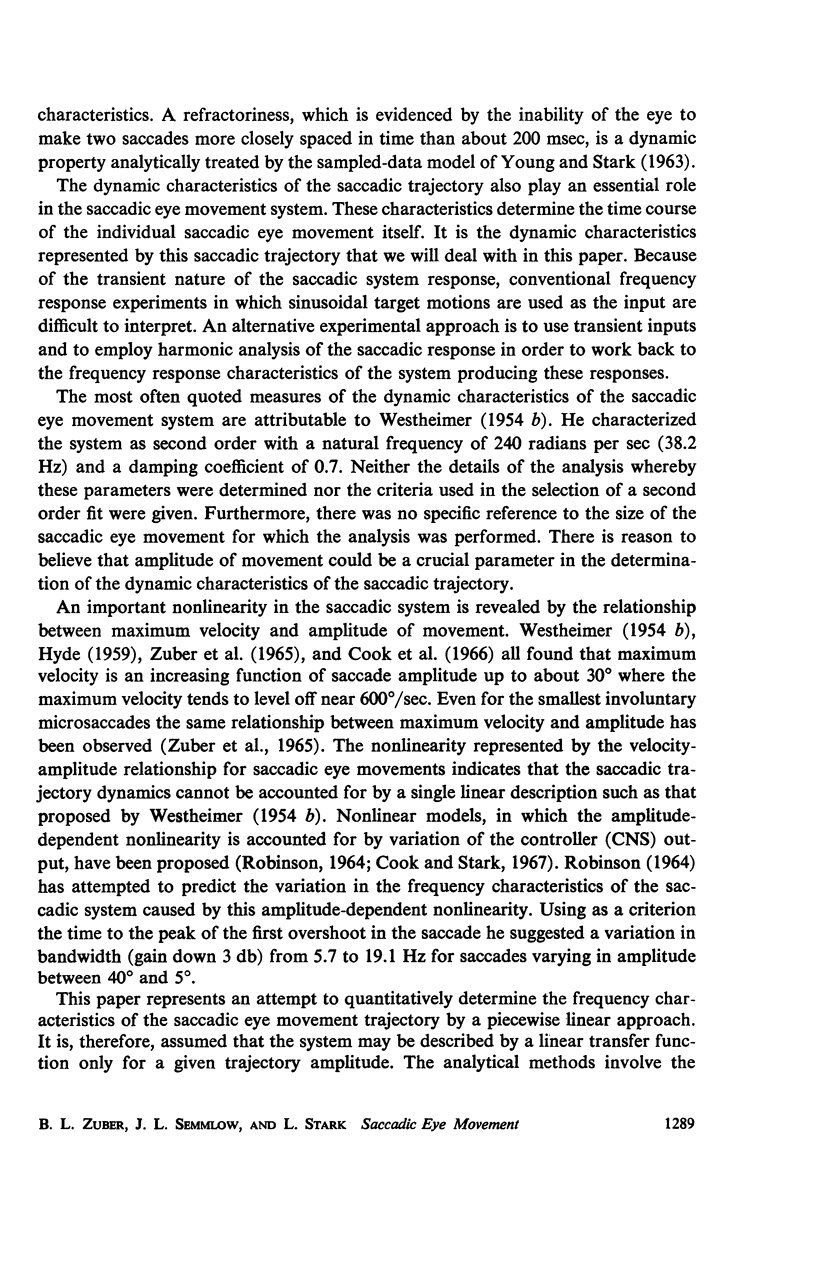
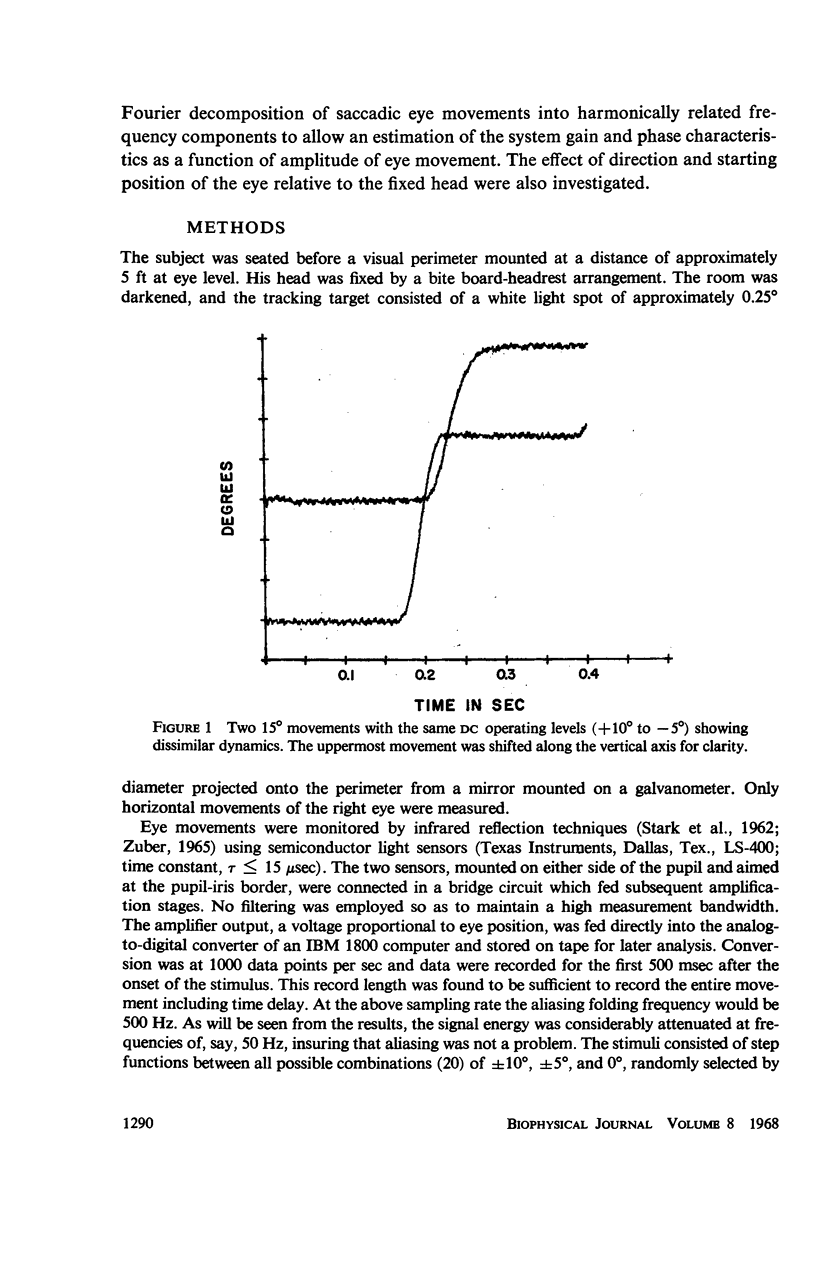
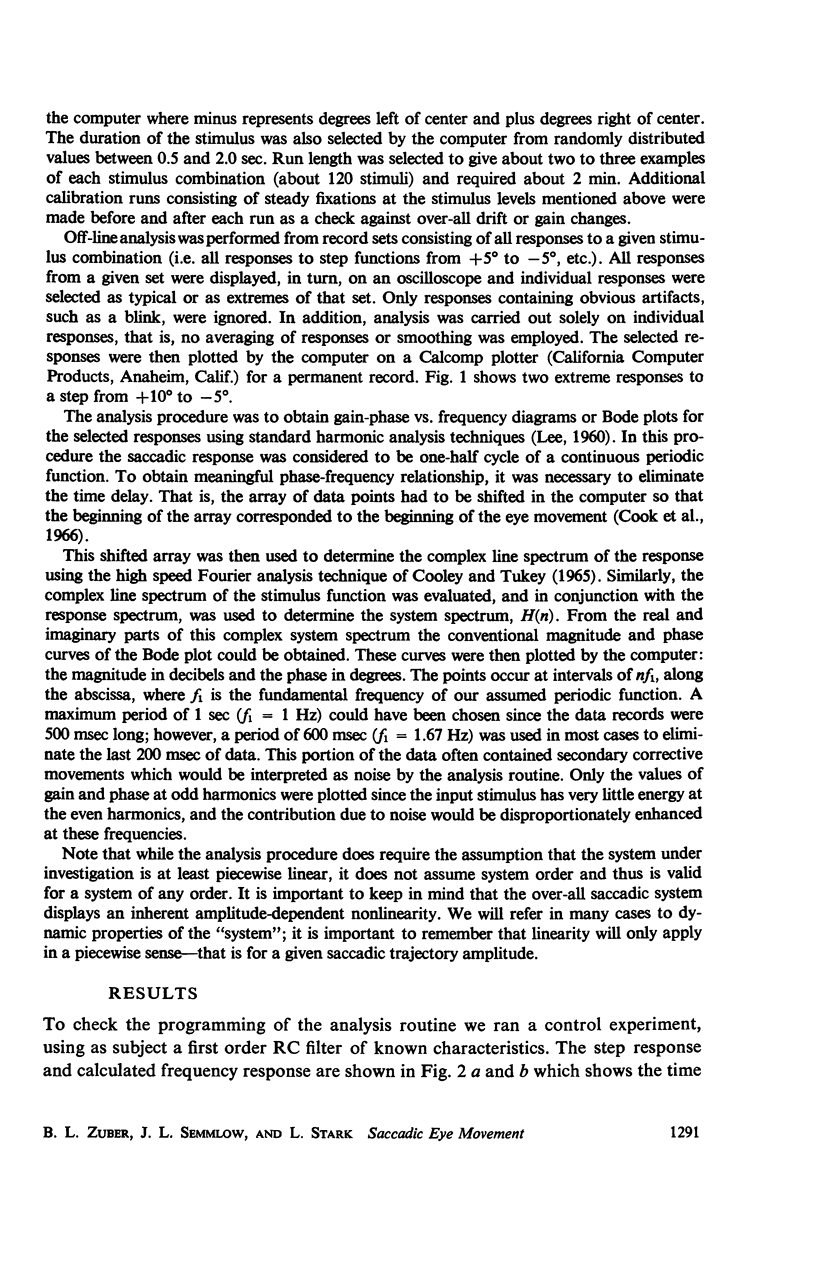
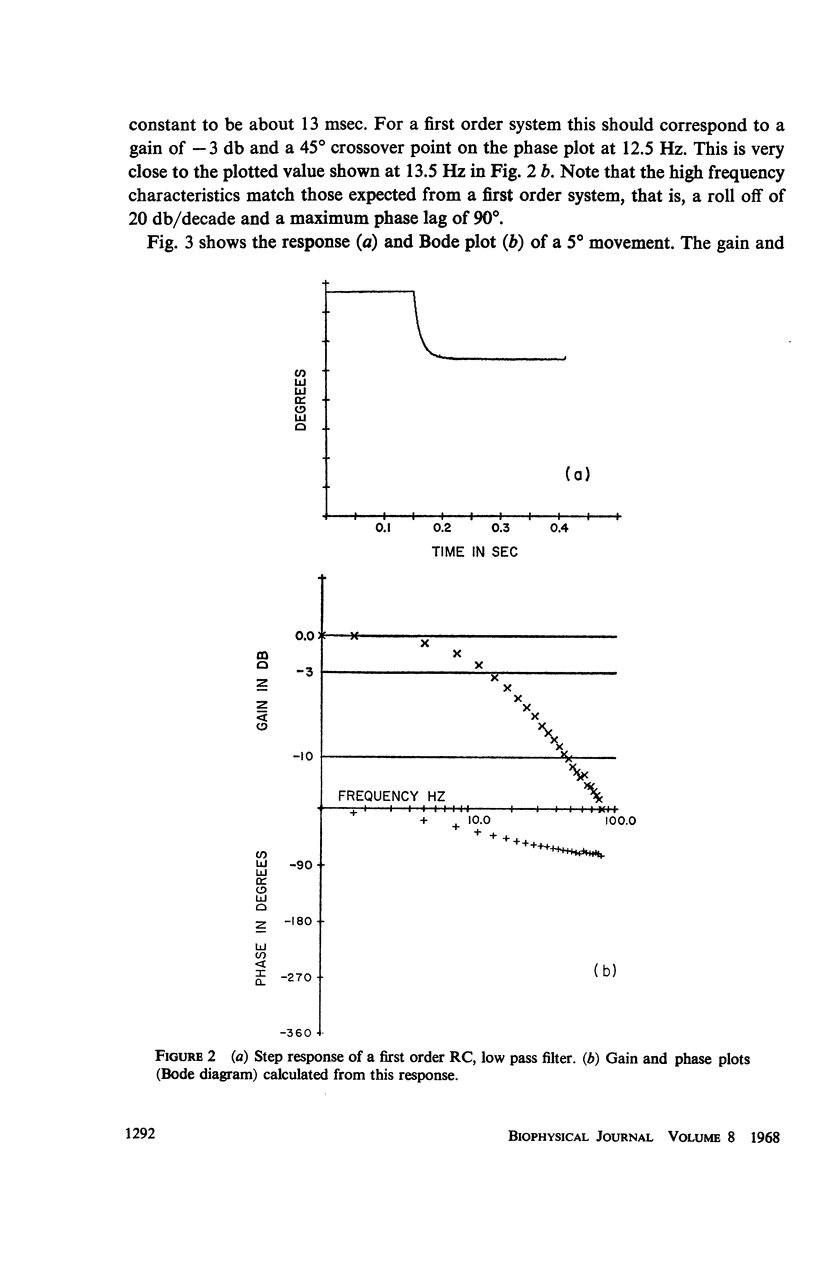
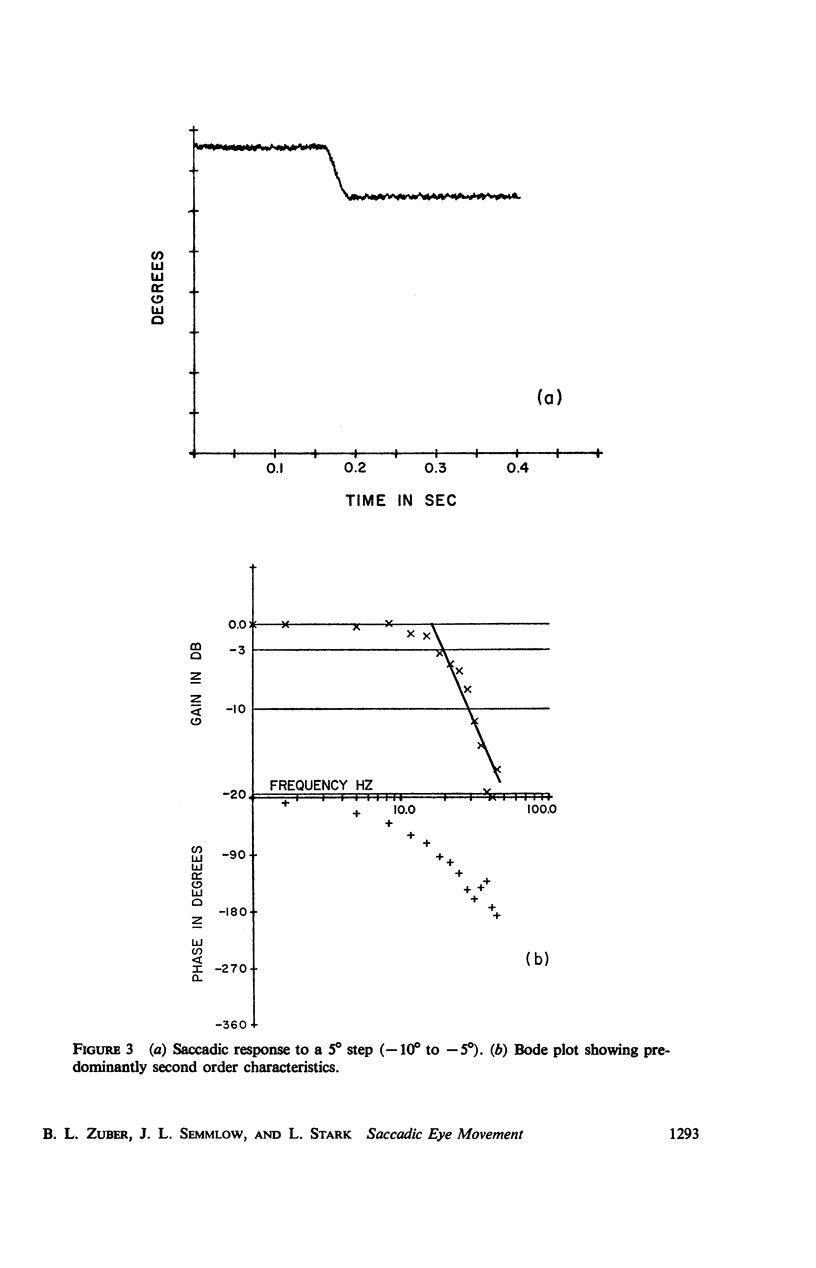
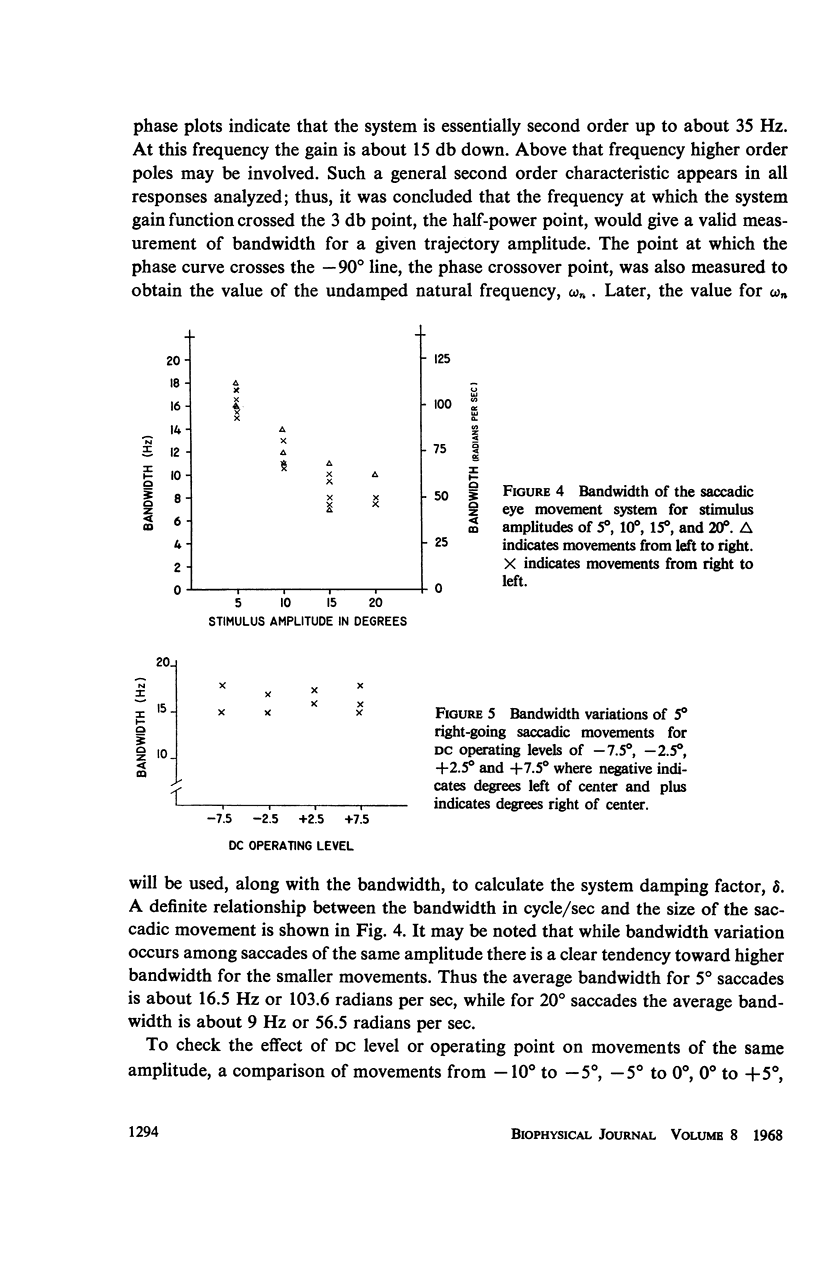
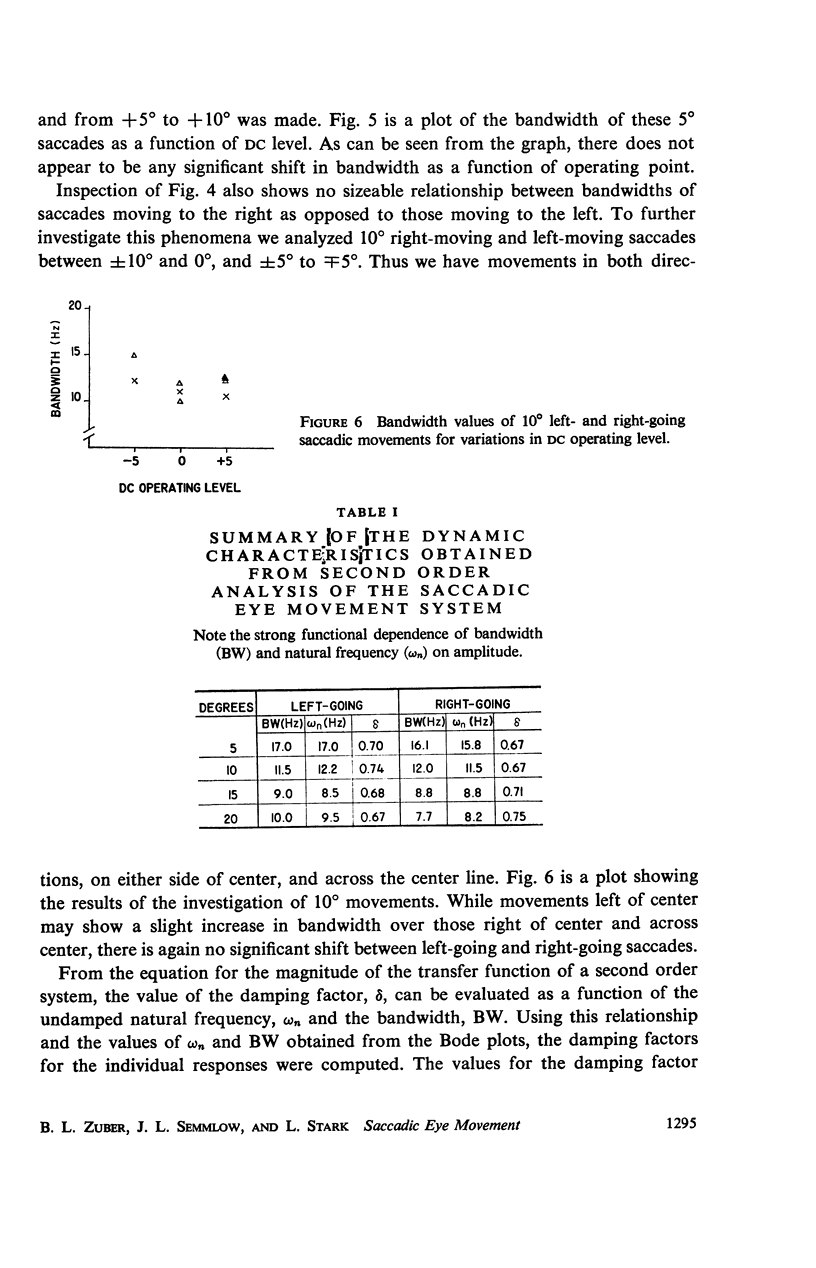
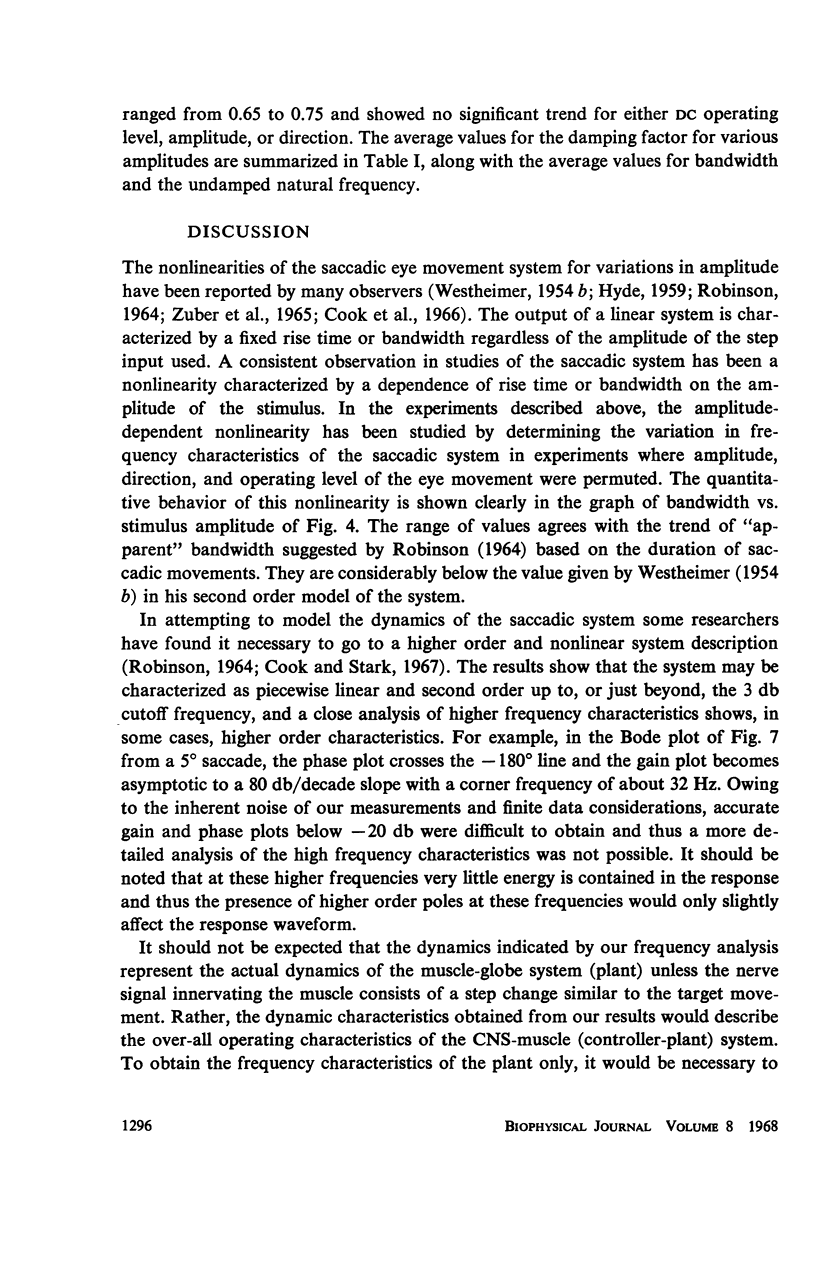
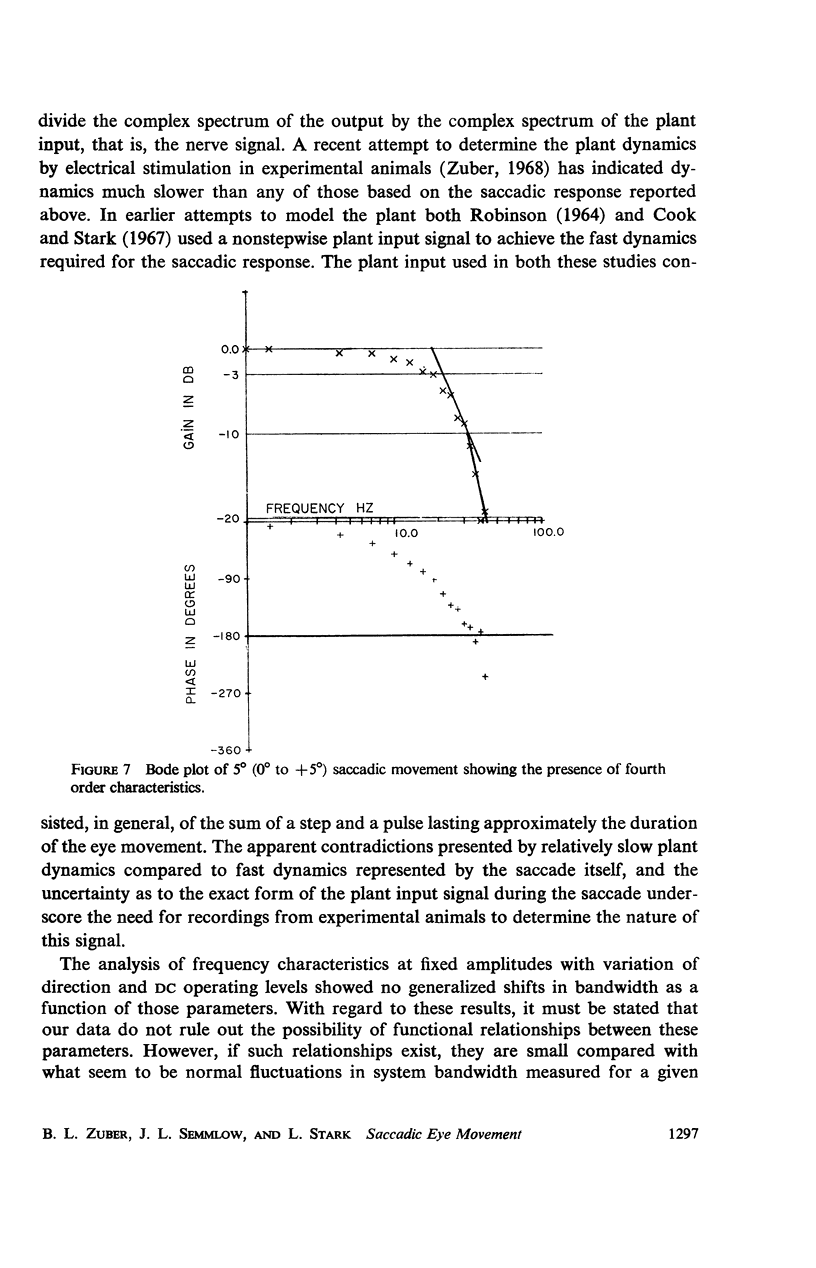
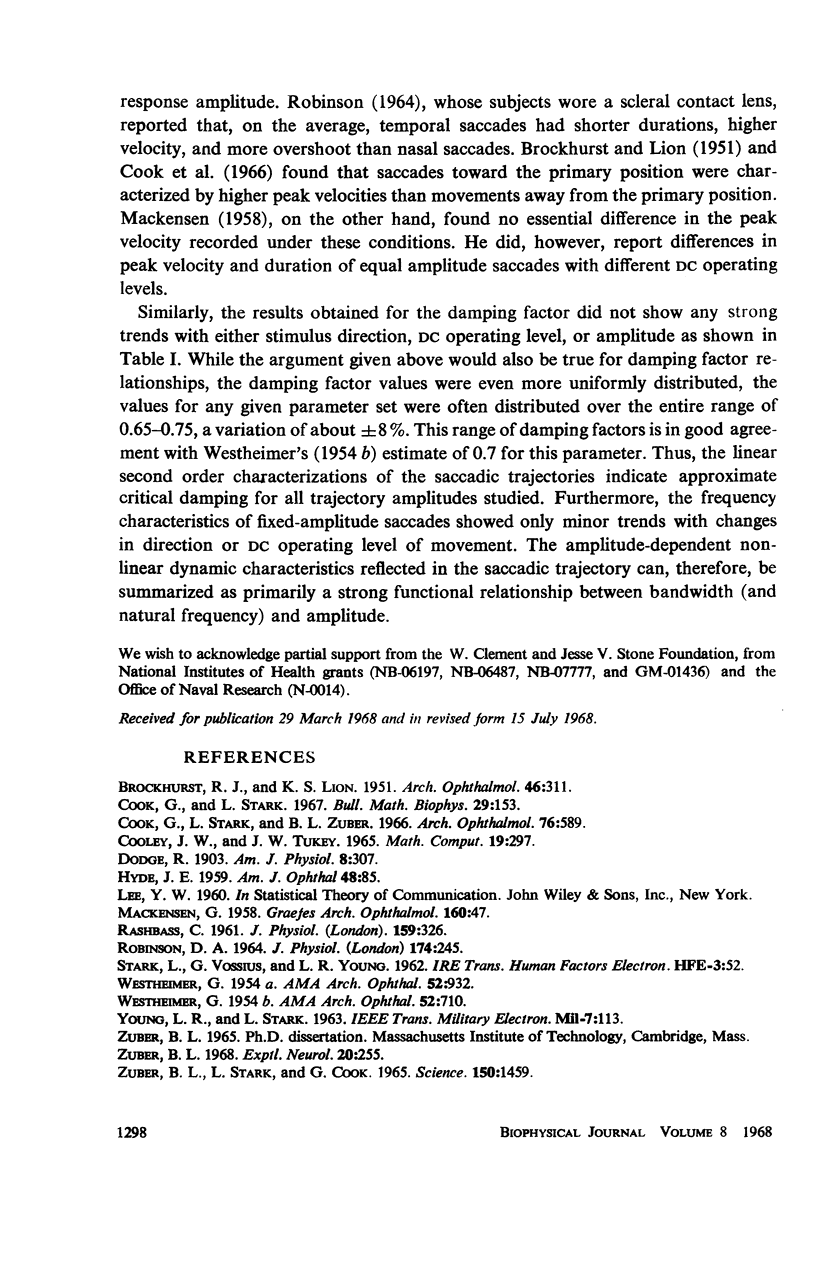
Selected References
These references are in PubMed. This may not be the complete list of references from this article.
- BROCKHURST R. J., LION K. S. Analysis of ocular movements by means of an electrical method. AMA Arch Ophthalmol. 1951 Sep;46(3):311–314. doi: 10.1001/archopht.1951.01700020320006. [DOI] [PubMed] [Google Scholar]
- Cook G., Stark L., Zuber B. L. Horizontal eye movements studied with the on-line computer. Arch Ophthalmol. 1966 Oct;76(4):589–595. doi: 10.1001/archopht.1966.03850010591020. [DOI] [PubMed] [Google Scholar]
- MACKENSEN G. Die Geschwindigkeit horizontaler Blickbewegunen: Untersuchungen mit Hilfe der Elektrooculographie. Albrecht Von Graefes Arch Ophthalmol. 1958;160(1):47–64. [PubMed] [Google Scholar]
- RASHBASS C. The relationship between saccadic and smooth tracking eye movements. J Physiol. 1961 Dec;159:326–338. doi: 10.1113/jphysiol.1961.sp006811. [DOI] [PMC free article] [PubMed] [Google Scholar]
- Zuber B. L. Eye movement dynamics in the cat: the final motor pathway. Exp Neurol. 1968 Feb;20(2):255–260. doi: 10.1016/0014-4886(68)90099-x. [DOI] [PubMed] [Google Scholar]
- Zuber B. L., Stark L., Cook G. Microsaccades and the velocity-amplitude relationship for saccadic eye movements. Science. 1965 Dec 10;150(3702):1459–1460. doi: 10.1126/science.150.3702.1459. [DOI] [PubMed] [Google Scholar]


